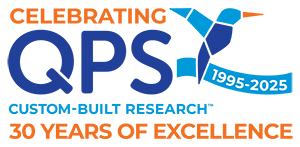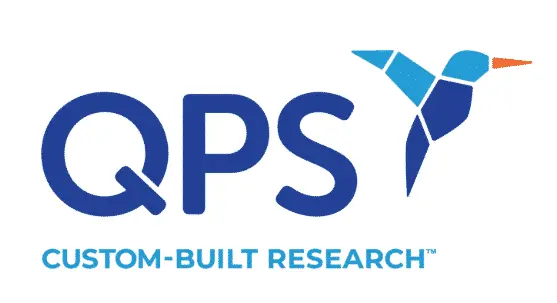Introduction
Researchers are developing novel, safer treatments for cancer, but bringing new oncology therapies to market is challenging. This white paper will examine the nature of common challenges that slow progress in early-phase clinical trials and how a strategic partner can help sponsors address them.
The global burden of cancer is growing, with an estimated 20 million new cancer cases and 9.7 million deaths reported in 2022. The World Health Organization’s cancer agency, the International Agency for Research on Cancer, estimated that approximately 1 in 5 people will develop cancer in their lifetime, with 1 in 9 men and 1 in 12 women dying from the disease. The number of new cancer cases in 2050 is projected to increase 77% from the 2020 case count to more than 35 million, driven by factors such as population aging, lifestyle changes and environmental exposures.
New therapies are being advanced to mitigate the growing global threat of cancer. However, early-phase oncology trials face several challenges that can slow their time to market. One comprehensive review found that, among all the oncology drugs tested in Phase I trials during 2015, only 6.2% had been approved by the Food and Drug Administration (FDA) by 2021. A number of factors may be contributing to this low approval rate, such as complex study designs, barriers to study participant and clinician recruitment and regulatory hurdles. This white paper will examine these challenges and how a strategic partner can help sponsors address them.
Advances in Cancer Therapies
Novel cancer therapies have transformed the landscape of oncology treatment. These advances include cell therapy, gene therapy and targeted antibody therapies, each offering distinct advantages and unique ways to counter the disease.
Cell Therapy
Cell therapies use the patient’s immune cells, which are modified and expanded in the lab, to target cancer cells.
CAR-T THERAPY
Chimeric antigen receptor T-cell (CAR-T) therapy uses genetic engineering to modify a patient’s T-cells to target and destroy cancer cells. CAR-T cells are modified to express receptors specific to cancer antigens, enabling them to recognize and kill malignant cells.
NATURAL KILLER (NK) CELL THERAPY
This therapy uses NK cells, a type of immune cell capable of recognizing and killing cancer cells without prior sensitization. It is being investigated for the treatment of various cancers, including hematologic malignancies and solid tumors.
TUMOR-INFILTRATING LYMPHOCYTES (TILS)
TIL therapy involves extracting lymphocytes that have infiltrated a patient’s tumor, expanding them in the laboratory, and re-infusing them into the patient. These TILs are naturally primed to recognize and attack cancer cells. TIL therapy has shown promise in treating metastatic melanoma and other solid tumors.
Novel cancer therapies have transformed the landscape of oncology treatment. These advances include cell therapy, gene therapy and targeted antibody therapies.
Gene Therapy
Gene therapies introduce genetic material into a patient’s cells to correct or manipulate genes responsible for cancer growth.
CRISPR
Clustered Regularly Interspaced Short Palindromic Repeats (CRISPR) technology has emerged as a powerful tool for gene editing, enabling precise modifications to the genome. In oncology, CRISPR is used to correct mutations that cause cancer or to enhance the body’s immune response against cancer cells.
GENE TRANSFER THERAPY
Gene transfer therapy involves introducing genetic material into a patient’s cells to produce a therapeutic effect. This can be achieved using viral vectors, such as retroviruses, lentiviruses or adeno-associated viruses (AAVs), to deliver the therapeutic gene. Gene transfer therapy is being explored to treat various cancers by introducing genes that can induce cell death, enhance immune responses or inhibit cancer cell growth.
Targeted Antibody Therapies
Targeted antibody therapies, including antibody-drug conjugates, use monoclonal antibodies designed to bind to specific antigens on cancer cells, thereby inhibiting their growth or marking them for destruction by the immune system. These therapies have become essential tools in treating various cancers.
Challenges In Early-Stage Clinical Oncology Drug Development
The innovative nature of these therapies brings a host of challenges to early-phase oncology clinical trials. These include:
Limited Time and Budget
Emerging therapies require substantial investment in specialized infrastructure, advanced technology and expert personnel. Financial limitations can hinder the development of robust preclinical data. Furthermore, time pressures can lead to expedited but less thorough study designs, potentially compromising the quality of data and delaying regulatory approvals.
Optimizing Study Design
Innovative therapies necessitate complex study designs, including adaptive trial methodologies and biomarker- driven approaches. Poorly designed trials risk generating inconclusive results, prolonging the development timeline and increasing costs.
Clinical Expertise Recruitment
The specialized nature of early-phase oncology trials demands a high level of clinical expertise. Recruiting skilled professionals with experience in molecular biology, immunology and clinical oncology is challenging, as there is a limited pool of such experts.
Regulatory Hurdles
Navigating the regulatory landscape for early-phase oncology trials requires the preparation of comprehensive preclinical data, clinical study protocols and chemistry, manufacturing and controls (CMC) development planning. Obtaining approvals involves multiple layers
of review and compliance with international standards, which can be time-consuming and costly.
Addressing these challenges requires thoughtful, strategic planning and the implementation of quality systems and processes, as discussed below.
Preparing For An Early Phase Oncology Trial
The following factors are important for ensuring regulatory compliance and the successful clinical progression of an investigational therapy.
Safety, Tolerability and Pharmacokinetics
Safety assessments include monitoring adverse effects, determining the maximum tolerated dose and understanding the treatment’s safety profile. Tolerability focuses on how well patients can endure the therapy without severe side effects, which is critical in dose- escalation studies. Pharmacokinetics (PK) is the analysis of how a drug is absorbed, distributed, metabolized and excreted in the body. PK data helps in optimizing dosing regimens and understanding drug interactions. Ensuring a comprehensive assessment of these parameters lays a strong foundation for subsequent trial phases.
Understanding FDA Guidance
The FDA provides detailed recommendations on clinical trial design, safety evaluations and efficacy endpoints. Understanding these guidelines helps in designing trials that meet regulatory expectations and ensure patient safety. It is important to stay updated with the latest FDA guidance documents, which provide insights into acceptable methodologies, reporting standards and important considerations for novel therapies. Compliance with these guidelines not only facilitates smoother regulatory approvals but also enhances the credibility and reliability of trial outcomes.
The goal is to provide early FDA input to help sponsors address specific issues related to IND requirements, such as the design of IND-enabling toxicity studies, complex manufacturing technologies or the development of innovative devices used with a drug or biologic.
Regulatory Gap Analysis
A regulatory gap analysis identifies discrepancies between current trial protocols and regulatory requirements, ensuring that all aspects of the study comply with industry standards. Key areas for analysis include:
- Pharmacology: Detailed pharmacology studies outline the investigational drug’s mechanism of action, therapeutic potential and biological effects.
- Good Laboratory Practice (GLP): GLP compliance is mandatory for non-clinical safety studies, including toxicology and safety pharmacology. Identifying gaps can prevent regulatory delays and ensure the robustness of safety data.
- Good Manufacturing Practice (GMP) Information: A thorough gap analysis ensures that all GMP requirements, including manufacturing processes, quality control measures and batch consistency, are met, preventing potential regulatory issues.
- Application Data: Preparing an investigational new drug (IND) or clinical trial application (CTA) requires compiling comprehensive data on the investigational drug, including preclinical data, clinical protocols and safety assessments. A regulatory gap analysis ensures that the application addresses all necessary components, facilitating a smoother approval process.
INTERACT and Pre-IND Meetings
In the US, the FDA oversees cell and gene therapies through its Center for Biologics Evaluation and Research (CBER). INitial Targeted Engagement for Regulatory Advice on CBER producTs (INTERACT) meetings are intended for novel products and development programs that present unique challenges in early development, typically before the filing of an IND application or before having a pre-IND meeting. The goal is to provide early FDA input to help sponsors address specific issues related to IND requirements, such as the design of IND-enabling toxicity studies, complex manufacturing technologies or the development of innovative devices used with a drug or biologic.
INTERACT and pre-IND meetings with the FDA provide an opportunity to discuss the trial design, safety evaluations and regulatory expectations. These early regulatory interactions are recommended for advanced therapies to ensure an agreed-upon scientifically relevant pathway to commercialization for these unique and complex products.
A comprehensive pre-IND briefing package includes detailed information on the investigational drug, proposed clinical protocols and preclinical data. A well-prepared briefing package enables the FDA to provide targeted feedback, helping to refine the trial design and address any regulatory concerns.
Typically, pre-IND meetings are scheduled several months in advance, allowing ample time for preparation and review. Timely responses from the FDA provide valuable insights into regulatory expectations, helping to adjust trial protocols accordingly and ensuring that the trial remains on track.
Accelerated Regulatory Programs
The FDA, the European Medicines Agency (EMA), Japan’s Pharmaceuticals and Medical Devices Agency (PMDA), Canada’s Health Canada and Australia’s Therapeutic Goods Administration (TGA) have created accelerated regulatory pathways to expedite the development and review of new therapies, particularly those addressing serious conditions or unmet medical needs. These programs, outlined below, aim to bring innovative treatments to patients more quickly while ensuring safety and efficacy.
- Fast Track: Drugs that receive Fast Track designation benefit from more frequent communication with the FDA and the possibility of rolling review, where sections of the new drug application (NDA) are submitted and reviewed as they are completed.
- Breakthrough Therapy: The Breakthrough Therapy designation is granted to drugs that show substantial improvement over existing therapies on one or more clinically significant endpoints. This designation includes all the benefits of the Fast Track program, as well as intensive guidance from the FDA on an efficient drug development program and organizational commitment involving senior FDA managers.
- Accelerated Approval: The Accelerated Approval program allows drugs for serious conditions that fill an unmet medical need to be approved based on a surrogate endpoint. A surrogate endpoint is a marker, such as a lab measurement or radiographic image, thought to predict clinical benefit. This can significantly shorten the time to market. However, post-approval studies are required to confirm the anticipated clinical benefit.
- Priority Review: Under the Priority Review designation, the FDA aims to act on an application within six months, compared to 10 months under standard review. This designation is given to drugs that, if approved, would provide significant improvements in the treatment, diagnosis or prevention of serious conditions.
The RMAT designation is intended for regenerative medicine therapies, including cell and gene therapies, which are expected to address unmet medical needs for serious conditions. RMAT offers benefits that include intensive guidance on efficient development and the potential for priority review.
EUROPEAN MEDICINES AGENCY’S (EMA) EXPEDITED PROGRAMS:
- PRIority Medicines (PRIME): The PRIME program supports the development of medicines that offer a major therapeutic advantage over existing treatments or benefit patients without treatment options.
- Advanced Therapy Medicinal Products (ATMPs): This regulatory framework applies to gene therapies, somatic-cell therapies and tissue-engineered products to ensure these complex therapies are authorized and monitored effectively.
PHARMACEUTICAL MEDICINES DEVICES AGENCY’S (PMDA) EXPEDITED PROGRAMS:
- Sakigake Designation: This designation promotes the early practical application of innovative pharmaceutical products, medical devices and regenerative medicines. Benefits include prioritized consultation, substantial pre-application consultation and priority review.
- Conditional Early Approval System: This program allows early approval of regenerative medicine products based on limited clinical data. Further clinical trials are required after approval as a condition of early approval.
HEALTH CANADA’S EXPEDITED PROGRAMS:
- Priority Review: This program expedites the review of drugs that offer significant improvements in the treatment, diagnosis or prevention of serious conditions. Review time is reduced from 300 days to 180 days.
- Notice of Compliance with Conditions (NOC/c): This program allows early market access to promising new drugs for serious, life-threatening or severely debilitating diseases. Conditions of approval may include the requirement to provide additional clinical data after approval.
THERAPEUTIC GOODS ADMINISTRATION’S (TGA) EXPEDITED PROGRAMS:
- Priority Review Designation: This designation expedites the review of prescription medicines that significantly improve the safety or efficacy of treatment for serious conditions by allowing a shortened evaluation timeframe.
- Provisional Approval Pathway: This program allows earlier access to promising new medicines based on preliminary clinical data. Time-limited approval is granted, and comprehensive clinical data must be provided post-approval.
The PRIME program supports the development of medicines that offer a major therapeutic advantage over existing treatments or benefit patients without treatment options.
Special Regulatory Considerations For Early-Phase Cell And Gene Oncology Trials
The regulatory landscape for early-phase cell and gene therapy oncology trials is complex and varies across regions. Sponsors must navigate multiple frameworks and engage with various regulatory agencies to ensure compliance. In addition, as cell and gene therapies may have prolonged biological activity, long-term follow-up (LTFU) is mandated to monitor delayed adverse events.
While early-phase oncology trials, particularly Phase I studies, are typically conducted within a single regulatory region, sponsors developing multiple drug candidates often engage with regulatory agencies across different global locations. This necessitates a deep understanding of the varied regulatory frameworks that govern drug development in regions such as the US, EU and Japan. While there is no harmonized international standard for regulating gene and cellular therapy products, key regulatory frameworks in the US, EU and Japan provide guidance for these advanced therapies.
In the US, the Center for Biologics Evaluation and Research (CBER) has developed several guidance documents to assist sponsors in designing early-phase trials, including the following:
In the EU, the EMA Committee for Medicinal Products for Human Use (CHMP) provides overall guidance, while the Committee for Advanced Therapies (CAT) specializes in ATMPs.
In Japan, the Ministry of Health, Labor and Welfare and the PMDA provide guidance to ensure the quality and safety of gene therapy products.

Key Elements Of Clinical Development Strategy
A robust clinical development strategy is essential for navigating the complexities of early-phase oncology drug development. This section outlines several key components:
Target Product Profile Development
Developing a target product profile (TPP) is a strategic process that defines the desired characteristics of a new therapeutic. The TPP serves as a roadmap, guiding clinical development from early-phase trials through to market authorization. Key technical factors in TPP development include:
- Target: Identifying and validating the biological target of the therapy.
- Tissue: Determining the tissue specificity of the therapeutic intervention, which facilitates predicting efficacy and potential off-target effects.
- Safety: Evaluating potential toxicities and understanding the therapeutic window.
- Patients: Defining the patient population, including genetic markers, disease stage and prior treatments.
- Commercial Potential: Evaluating the market potential to understand the competitive landscape, potential pricing and reimbursement strategies.
Protocol Development and Design
Smart clinical trial protocol development can significantly improve the efficiency and success of early-phase trials. Sponsors can leverage the following approaches:
- Adaptive Design: Adaptive trial designs allow modifications to the trial procedures based on interim data without compromising the validity and integrity of the study. These can include changes to sample size, dosing regimens or patient selection criteria. Adaptive designs can enhance the flexibility and efficiency of early-phase oncology trials, making them more responsive to emerging data.
- Dose Optimization: Determining the maximum tolerated dose and recommended Phase II dose for novel therapies is based on dose-escalation studies and careful monitoring of adverse effects to identify the optimal dosing regimen that maximizes efficacy while minimizing toxicity.
- Selecting Clinical Efficacy Endpoints: Choosing appropriate clinical endpoints is essential for demonstrating the therapeutic benefit of the investigational drug. Endpoints should be clinically meaningful and aligned with regulatory expectations. Common endpoints in early-phase oncology trials include objective response rates, progression-free survival and overall survival. Biomarker-driven endpoints can also provide insights into the mechanism of action and patient response.
Investigator and Site Selection
Finding the right investigators and clinical trial sites is pivotal for the success of early-phase oncology trials. Considerations include:
- Investigator Expertise: The complexity of early-phase oncology trials requires investigators with specialized knowledge and experience. Investigators can provide valuable insights into study design, patient recruitment and data interpretation.
- Site Capability: Clinical trial sites must have the necessary infrastructure, technology and personnel to conduct advanced oncology trials. This includes capabilities for complex laboratory assays, imaging studies and real-time data management.
- Patient Access: Sites with access to diverse patient populations can enhance recruitment efficiency and ensure the study population is representative of the target patient group.
Challenges Specific To Early-Phase Clinical Oncology Studies
Early-phase clinical oncology studies face unique challenges that can significantly impact their success and progress. This section explores the specific hurdles associated with enrollment, site management and cohort management in early-phase oncology trials.
Enrollment Challenges
One of the most critical challenges in early-phase oncology studies is identifying and enrolling participants. Unlike other therapeutic areas, oncology trials often require patients who meet highly specific criteria. Research suggests that an estimated 7.1% of cancer patients participate in clinical trials, compared with nearly 50% of people invited to participate in non-oncology trials.
Precision medicine approaches necessitate enrolling participants with specific genetic profiles, biomarkers or disease subtypes. This specificity often limits the pool of eligible participants and complicates recruitment efforts. For instance, trials may require patients with a particular mutation or those who have not responded to standard treatments.
The complexity of treatment algorithms and strict eligibility criteria further complicate enrollment. Potential participants must undergo extensive screening to ensure they meet all protocol requirements, which can be time- consuming and resource-intensive. This often results in longer recruitment periods and smaller sample sizes.
In addition, although early-phase studies in other areas include healthy participants to evaluate safety, oncology studies rarely do so due to the inherent risks and ethical considerations. This exclusion further narrows the participant pool and emphasizes the need for efficient patient recruitment strategies.
Research suggests that an estimated 7.1% of cancer patients participate in clinical trials, compared with nearly 50% of people invited to participate in non- oncology trials.
Site Challenges
Early-phase oncology trials typically occur in numerous sites across multiple countries to ensure adequate patient recruitment and diversity. This global approach necessitates rigorous coordination and communication among sites. Additionally, oncology trials usually require more frequent patient visits and complex procedures, which can strain site resources and staff.
Data and Cohort Management
Oncology trials generate a substantial amount of data due to the detailed monitoring of patient responses, adverse effects and biomarker analyses. One report estimated that Phase 2 oncology studies averaged 3.1 million data points per protocol, compared to 1.9 million in non- oncology studies. Robust data management systems and specialized personnel are therefore necessary to ensure data integrity and timely analysis.
Efficient cohort management, including participant registration, assignment and data review, is also vital to ensure accurate and timely data collection, patient safety and dose escalation decisions.

Partner With Qps To Overcome Early- Phase Oncology Program Challenges
As outlined in this white paper, early-phase oncology studies face a variety of complex challenges. Navigating these obstacles requires a strategic approach, specialized expertise and robust infrastructure. QPS is well-positioned to assist sponsors in overcoming these challenges and advancing their early-phase oncology programs efficiently and effectively.
Extensive Experience with Early-Phase Oncology Studies
With a wealth of experience in conducting early- phase oncology trials, QPS has developed a deep understanding of the unique requirements and challenges associated with these studies.
Dedicated Early-Phase Research Facilities
Our global network of Phase I research facilities, comprising more than 500 beds, spans three continents. This extensive infrastructure allows QPS to conduct early-phase trials with a diverse and representative patient population, ensuring robust and generalizable results. The geographic diversity of our facilities also enhances patient recruitment and retention.
Skilled Team to Partner with Your Organization
Our team of skilled professionals, including clinical researchers, data scientists, and regulatory experts, collaborates closely with sponsors to understand their specific needs and goals. This partnership approach ensures that our strategies align with the sponsor’s objectives, resulting in more effective and efficient trial execution.
Strategic Clinical Trial Planning
Strategic planning is at the core of our approach to early-phase oncology trials. We leverage our extensive experience and industry insights to design trials that are scientifically rigorous yet feasible. Our adaptive trial designs and innovative methodologies enable us to optimize study protocols, ensuring robust and reliable data while maintaining flexibility to respond to emerging findings.
Study Recruitment
Our comprehensive recruitment services, coupled with our global network of research sites, enable us to efficiently identify and enroll suitable participants. By ensuring that the right patients are included in the trials, we enhance the likelihood of successful outcomes.
Global Facilities and Staff
Our global presence, with facilities and staff across multiple continents, allows QPS to conduct multi-site, international trials seamlessly. This global reach not only enhances patient recruitment but also ensures that our trials adhere to diverse regulatory requirements and cultural considerations, making the findings more applicable and generalizable.
Regulatory Expertise
Our expert team has a deep understanding of the regulatory landscape across regions. We work closely with sponsors to prepare comprehensive submissions, conduct regulatory gap analyses and engage with regulatory agencies, ensuring that all trials comply with the highest standards and proceed smoothly through the approval process.
Contact Us To Learn More
Addressing the challenges and complexities of early-phase oncology trials requires thoughtful strategic planning and the implementation of quality systems and processes. By engaging with a partner with deep oncology expertise, sponsors can navigate these complexities, ensuring that their clinical trial journey is as efficient as possible.
Our proven success in the field has established our reputation as an innovative, results-driven partner. We encourage you to visit our website to learn more about our full range of support services for clinical trial sponsors.
Visit www.qps.com and discover how we can support your clinical trial. Contact us by email at infobd@qps.com or visit www.qps.com/contact.





